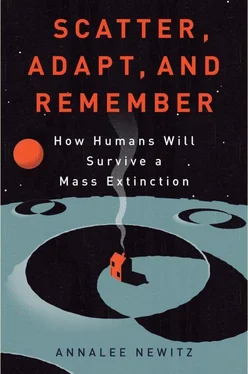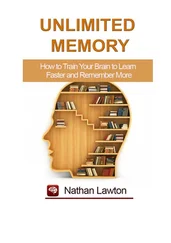If we’re facing a brewing pandemic, however, there are good reasons to avoid large-scale social events where the disease could spread. Canceling a large concert, or asking people to stay at home, are both part of a pandemic-containment technique called social distancing. Most experts believe that social distancing and quarantine on a limited basis can help: At UCLA’s David Geffen School of Medicine, biomedical model expert Brian Coburn and his colleagues claim that school closures and discouraging big public events can reduce the spread of flu by 13 percent to 17 percent. Voluntary quarantine in the home seems to work better than closing schools, though closing schools is often a sound policy because a microbe’s fastest route to pandemic status is to infect children.
Vaccination must be global
As we’ve seen already, quarantine works in only limited doses. What’s our next option? Let’s consider vaccination, which many of us are familiar with from the H1N1 (swine flu) pandemic of 2009. Vaccines program the immune system to recognize and neutralize disease-causing microbes that enter our bodies. When we get flu vaccinations, we receive a small dose of damaged and dead flu viruses that help our bodies build up antibodies tailor-made to stop the flu when it shows up. Vaccines are usually not cures, and don’t generally help people who are already sick; they are used as a preventative measure.
Most pandemic modelers agree on one thing: Vaccines stop pandemics only if they are administered very early in the outbreak, before the disease has had a chance to spread. Laura Matrajt, a mathematician at the University of Washington in Seattle, has modeled several strategies for containing pandemics with vaccines. The problem, she points out, is that pandemics spread differently depending on the population—a rural outbreak is very different from an urban one. They also spread differently in the developed world than they do in developing countries, largely because children make up nearly 50 percent of the population in many developing countries (in most developed nations children are less than 20 percent of the population).
Vaccinating children is vital in stopping a pandemic, because they are what Matrajt calls a high-transmission group. In other words, children are humanity’s biggest spreaders of disease. If we can vaccinate kids against a pandemic disease, it will spread slowly enough that we can contain it and protect adults, too. Coburn reports that some of his colleagues found that “vaccinating 80% of children (less than 19 years old) would be almost as effective as vaccinating 80% of the entire population.”
The problem is, most children are in developing countries that cannot afford to buy vaccines. This is where science butts heads with social reality. Pandemic modelers have to add dark economic truths into their equations, and figure out how best to administer vaccines in a situation where perhaps only 2 percent of the population will have access to it. Matrajt and her colleagues came up with several scenarios in the developing and developed worlds, where people had access to different amounts of vaccine, ranging from 2 percent coverage to 30 percent. “For a less developed country, where the high-transmission group accounts for the majority of the population, one needs large amounts of vaccine to indirectly protect the high-risk groups by vaccinating the high-transmission ones,” they wrote in a summary of their work. Tragically, the countries that need the most vaccine the soonest are the least likely to get it.
Though vaccine manufacturers like GlaxoSmithKline and Sanofi-Aventis have promised to donate millions of vaccines to developing countries, and the WHO can pressure developed nations to donate 10 percent of their stockpiles, these gestures are still woefully inadequate. After contemplating the imbalances in H1N1 vaccine distribution, Dr. Tadataka Yamada of the Bill & Melinda Gates Foundation’s Global Health Program was so disturbed that he wrote, “I cannot imagine standing by and watching if, at the time of crisis, the rich live and the poor die.” With the Gates Foundation, he published guidelines for the global sharing of vaccines, arguing passionately that “rich countries have a responsibility to stand in line and receive their vaccine allotments alongside poor countries.”
When H1N1 spread far enough that the WHO declared it a pandemic, scientists worked rapidly to synthesize a vaccine and manufacturers churned it out. Still, the vaccine wasn’t available until many months after the pandemic had subsided, and developing countries weren’t able to afford as many doses as developed ones. Luckily, this particular strain of the flu was very mild, but the world economic situation is one major reason vaccines may not be the best weapon against pandemics.
Decentralized treatment and “hedging”
What about the most obvious strategy? That would be treating the sick with medicines that kill the pandemic disease. In the case of flu, the treatments come from a few antiviral medications. In the case of a new outbreak of the bubonic plague, we’d look to antibiotics. But we have to ask ourselves the same questions we did when considering how to use vaccines to stop a pandemic: How will we get enough medicine to enough people fast enough?
The answer isn’t just to send everybody to the hospital. First of all, people may be sick in areas where there are no hospitals, and second, during a pandemic, hospitals will be overwhelmed with sick people already. Plus, sick people may not actually be able to get out of bed and go to the hospital—especially if everybody in their family is sick, too. The University of Melbourne’s Robert Moss is an immunization researcher who points out that we’re going to need to come up with some novel ways of delivering antivirals in the event of another pandemic. After researching the ways antivirals were prescribed during the H1N1 pandemic, Moss and his colleagues discovered that medicine wasn’t handed out in a timely fashion because of one simple bottleneck: testing facilities. Most doctors conscientiously sent out blood samples from every person who visited them claiming to have the flu, and waited to hear back from often distant labs for diagnosis. As a result, people went untreated and more cases piled up as labs were overwhelmed. During a more deadly pandemic, the situation would have been disastrous.
Moss believes there are a few simple ways that doctors can simplify the process of prescribing medication to avoid this bottleneck. He calls it decentralization. If a pandemic is under way and labs are overrun, the best way to diagnose patients is based on the symptoms that they present with. Do their ailments sound like the pandemic disease? Then give them the medicine. There’s no time to waste. In addition, Moss recommends setting up informal treatment centers in as many places as possible, including online, to make it easy for people to get diagnosed. Nurses who can’t normally prescribe medicines should be allowed to prescribe the antivirals if a patient has the symptoms of the pandemic disease. And couriers should deliver them to people’s houses.
The developing world might be better prepared for this decentralized method than the developed, mainly because many medicines in these countries are already handed out via decentralized, informal treatment facilities. Health-care workers treating everything from yellow fever to cholera have set up treatment stations in remote regions, hoping to reach the largest number of people.
The University of Hong Kong’s Joseph Wu says his models show that countries should always “hedge” by stockpiling two different antiviral medications. That’s because viruses often mutate during flu season, becoming resistant to the drugs used in treatment. But if we dispense two different drugs, the virus can’t mutate fast enough to keep up. Wu’s “hedging” strategy seems to work, at least in computer simulations of outbreaks in urban areas that assume people are traveling between cities fairly rapidly. If the city where the outbreak occurs uses two drugs to combat the pandemic instead of one, 10 percent fewer people overall will be infected than if only one drug is used. And the number of people infected with mutant strains of the virus will go down from 38 percent to 2 percent of the population. Those numbers are quite significant, especially because one of our goals as we stop a pandemic in its tracks is to prevent the microbes from mutating into something we can’t treat at all.
Читать дальше






![Аннали Ньюиц - Автономность [litres]](/books/424681/annali-nyuic-avtonomnost-litres-thumb.webp)





